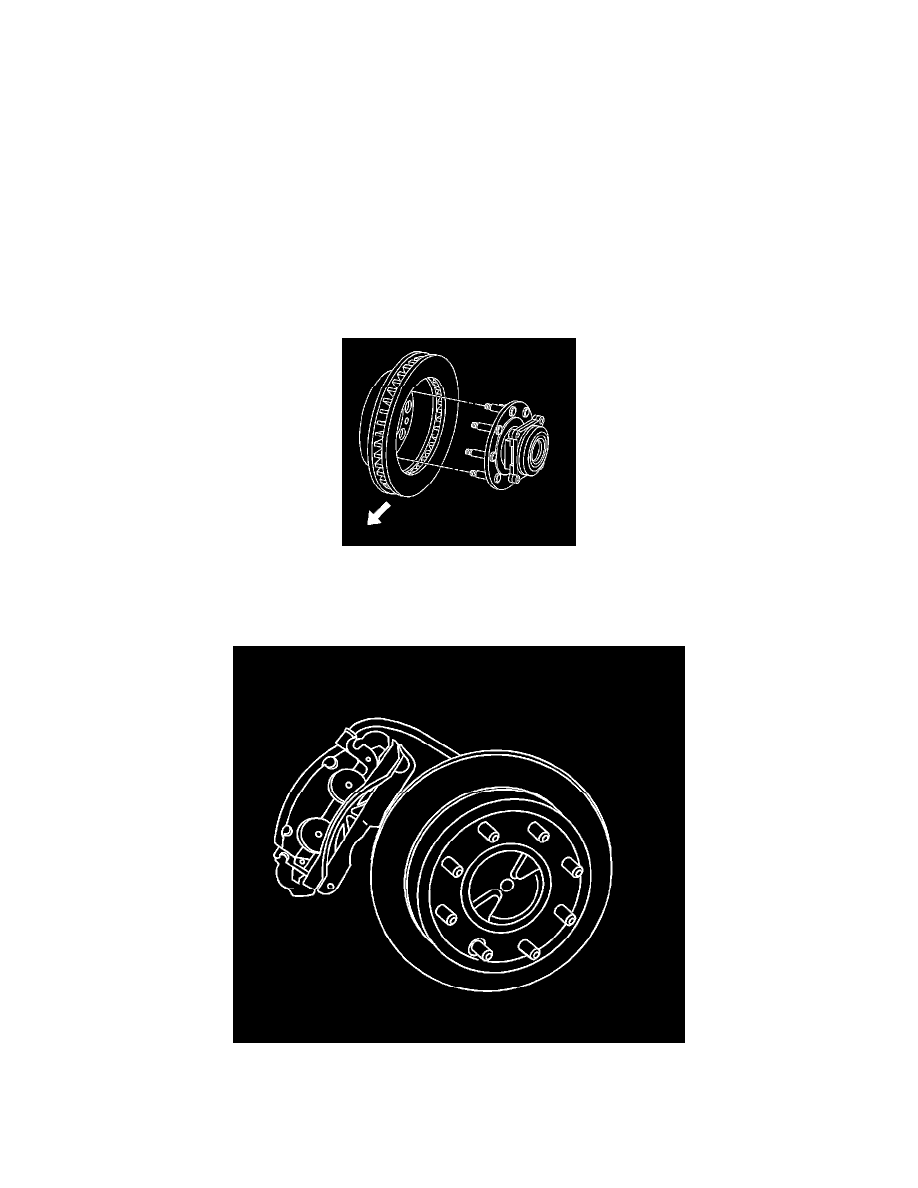Express 2500 V8-6.6L DSL Turbo (2010)

12. If the rotor is difficult to remove due to corrosion in the hub area use the following procedure to remove the rotor, 25 and 35 series only.
1. Clean all the surface areas and the threaded holes of contamination.
2. Generously apply penetrating oil or the equivalent to the hub/rotor area.
3. Insert two M10 x 1.5 bolts or jack screws into the threaded holes of the rotor.
4. Tighten both bolts evenly to force the rotor from the hub.
Installation Procedure
Note: Whenever the brake rotor has been separated from the hub/axle flange, any rust or contaminants should be cleaned from the hub/axle flange
and the brake rotor mating surfaces. Failure to do this may result in excessive assembled lateral runout (LRO) of the brake rotor, which could lead
to brake pulsation.
1. Use the J-42450-A - Wheel Hub Resurfacing Kit to clean all rust and contaminants from the mating surface of the hub flange.
2. Use the J-42450-A - Wheel Hub Resurfacing Kit to clean all rust and contaminants from the inside diameter of the hat section of the brake rotor to
prevent any foreign material from getting between the brake rotor and the hub flange.
3. Inspect the mating surfaces of the hub/axle flange and the rotor to ensure that there are no foreign particles or debris remaining.
Note: If the rotor was removed using the jack screw method you must ensure that the hub flange is free of nicks or marks caused by this
procedure. Remove all raised nicks or marks before installing the rotor.
4. Align the rotor to its original position on the hub (if applicable) and install the rotor.
5. Install the caliper and caliper bracket assembly.
6. Prepare the brake caliper bracket bolts for installation:
*
Remove all traces of the original adhesive patch.
*
Clean the threads of the bolt with denatured alcohol or equivalent and allow to dry.
